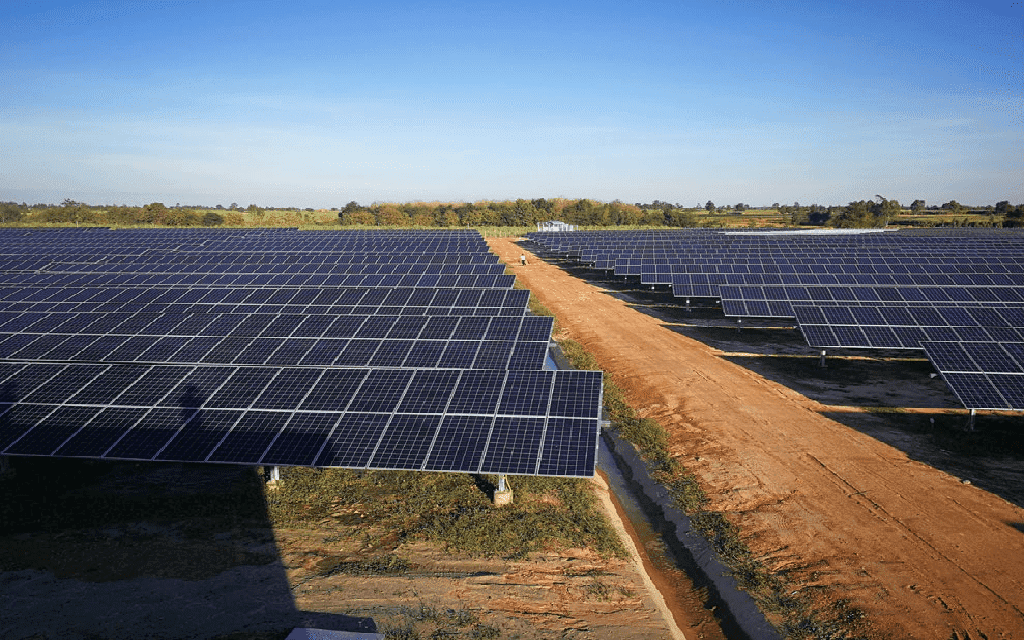What types of solar panels are available?
Solar energy has become an important source of renewable energy all over the world. Solar panels, specifically solar cells, people use it to capture and convert sunlight into electricity. These solar panels vary in appearance, performance, costs, and manufacturing methods. Solar panels have come a long way since their inception, and they are now available in various types. Here, we will take a look at the major types of solar panels.
1. Monocrystalline Solar Panels
If you see a solar panel with black cells, it’s most likely a monocrystalline panel. These cells appear black because of how light interacts with the pure silicon crystal.
While the solar cells themselves are black, monocrystalline solar panels have a variety of colors for their back sheets and frames. The back sheet of the solar panel will most often be black, silver or white, while the metal frames are typically black or silver.
Monocrystalline solar panels are made from pure silicon. This type of solar panel has a high level of efficiency, i.e., it can generate more power in less space. They are popular for their sleek design and excellent performance in low-light conditions. However, they are also the most expensive type of solar panel.
2. Polycrystalline Solar Panels
Unlike monocrystalline solar cells, polycrystalline solar cells tend to have a bluish hue due to the light reflecting off the silicon fragments in the cell in a different way than it reflects off a pure monocrystalline silicon wafer.
Like monocrystalline, polycrystalline panels have different colors for back sheets and frames. Most often, the frames of polycrystalline panels are silver, and the back sheets are either silver or white.
Polycrystalline solar panels are made from multiple silicon cells. They are less efficient and take up more space than monocrystalline solar panels.Although they are less expensive than monocrystalline solar panels, they are still quite expensive. They are also not as durable as the other types of solar panels.
3. Thin-Film Solar Panels
The biggest differentiating aesthetic factor when it comes to thin-film solar panels is how thin and low-profile the technology is. As their name suggests, thin-film panels are often slimmer than other panel types. This is because the cells within the panels are roughly 350 times thinner than the crystalline wafers used in monocrystalline and polycrystalline solar panels.
Thin-film solar panels are made from a thin layer of photovoltaic material. This type of solar panel is very popular because of its flexibility and lightweight design.They are the least efficient type of solar panel but are also the least expensive. They are also more durable as compared to other solar panels. Thin-film solar panels are used in various applications like building-integrated photovoltaics, solar-powered lightings, and solar-powered chargers.
4. Bifacial Solar Panels
Bifacial solar panels are a relatively new type of solar panel in the market. They can capture sunlight from both sides of the panel. This type of solar panel has the ability to generate more electricity as compared to monocrystalline and polycrystalline solar panels. Bifacial solar panels are typically suitable for large solar energy installations and are not suitable for residential installations.
5. Concentrated Photovoltaic Panels
Concentrated photovoltaic solar panels use lenses or mirrors to focus sunlight onto small areas, thereby increasing the efficiency of the panel. They are also capable of generating more power in less space as compared to other solar panels. However, they are the most expensive type of solar panel and require constant maintenance to ensure optimal performance.
Conclusion
In conclusion, solar panels are an excellent source of renewable energy. The type of solar panel you choose will depend on various factors like space availability, budget, performance requirements, and environmental conditions. It is important to consult with a professional before deciding on the type of solar panel to install to ensure that you get the maximum benefits from your investment.
